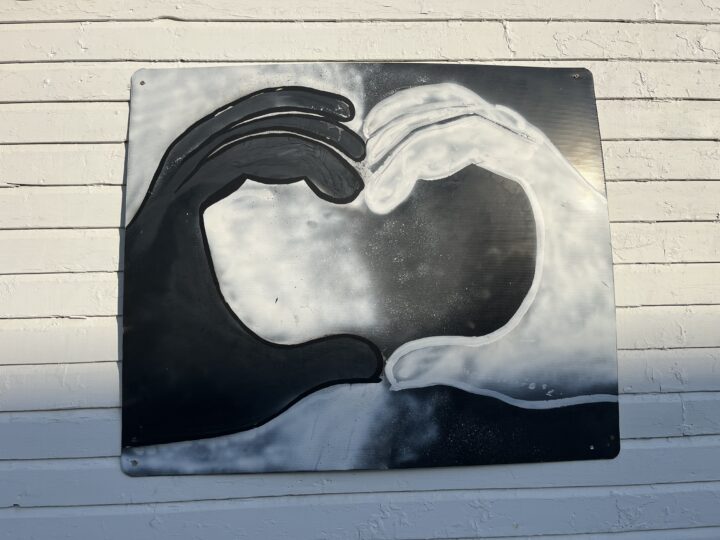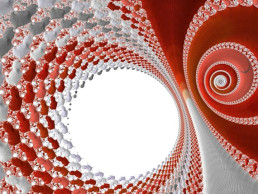“Entangled” Social Change: From Inter-action to “Intra-Action”
“What is at stake with quantum theory is the very nature of reality. Should reality be understood as something completely impervious to our interventions, or should it be viewed as something responsive to the very existence of human beings?”
Christopher Fuchs (physicist)
A mark of a good book for me is one that challenges my thinking, moves my heart, and also resonates in my body. That has been the case while reading Karen O’Brien’s You Matter More Than You Think: Quantum Social Science for a Thriving World. I want to give a big “thank you” and shout out to Fabian Pfortmüller who made this recommendation to me during a rich conversation a few weeks ago.
O’Brien’s book makes the case for bringing a quantum physics lens to the social sciences and to thinking about social change, even as she acknowledges the doubters and detractors who see this as an inappropriate move. Indeed, in posting about the book on LinkedIn recently, I was a little surprised to see a couple of comments attacking the idea of importing quantum considerations into the human realm. In anticipation of this, O’Brien notes that while quantum and classical physics, as well as the “hard” and social sciences, may have different applications, they are not totally separate from each other. Furthermore she writes:
“… given the nature of global crises, maybe this actually is an appropriate time to consider how meanings, metaphors and methods informed by quantum physics can inspire social change, and in particular our responses to climate change.”
So I have been doing what she invites – playing with these different ideas and concepts from the quantum realm and seeing what they stimulate. One I want to lift up here is the notion of subjectivity versus objectivity, and specifically that we are always participants in the world, never simply “detached observers.” This is not simply meant in an emotional sense, but that our very act of observing is actually an embodied intervention and can change what we see and also how we see the world. This “entanglement” (meant more metaphorically here, rather than in the formal scientific sense) asks us to consider how we are already connected, or part of a larger whole.
O’Brien spends some time exploring beliefs as being central to both what is possible and what is actually realized in our lives and world. If we believe we are completely separate from one another, for example. what do we and don’t we consider possible or worth while? If we believe we are more tied or woven, then what might we be inclined to do? The work of Karen Barad is referenced in this respect, pointing out the difference between talking/thinking about “inter-actions” of separate entities versus “intra-actions” among entangled elements within a larger whole. This is not just about a difference in language, but a difference in perceived and acted upon futures.

What comes to mind is a mantra of sorts that Valarie Kaur puts forward in her justice work focused on addressing the dynamics of othering and oppression, as well as in her book See No Stranger: A Memoir and Manifesto of Revolutionary Love –
“You are a part of me I do not yet know.”
Similar to this spirit, john a. powell offers the following in Racing to Justice: Transforming Our Conceptions of Self and Other to Build an Inclusive Society:
“There is a need for an alternative vision, a beloved community where being connected to the other is seen as the foundation of a healthy self, not its destruction, and where the racial other is seen not as the infinite other, but rather as the other that is always and already a part of us.”
I am also reminded of the peace-building work of John Paul Lederach, and this from his book The Moral Imagination: The Art and Soul of Building Peace:
“Time and again, where in small or larger ways the shackles of violence are broken, we find a singular tap root that gives life to the moral imagination: the capacity of individuals and communities to imagine themselves in a web of relationship even with their enemies.”
If we treat the so-called “other” (whether human, other animals, plants … ) as apart from us, or as in some sense fundamentally threatening (“the enemy”), then where does that lead? The point here is that reality is not just “reality out there,” it is also what we make of it. We have a say. We matter. What we believe matters. What we do matters. Embracing “a bigger WE” matters. We can “bring forth worlds,” (to quote Humberto Maturana and Francisco Varela’s Santiago Theory of Cognition) at least to a certain extent. And whether this is about imagining or re-membering, acting “as if” we are joined in something larger can seemingly create tangible results, while also acknowledging that dynamics of power and privilege are important to consider in terms of who may be inclined to make first gestures and how these will be received.
“Between me and not-me there is surely a line, a clear distinction, or so it seems. But, now that I look, where is that line?
This fresh apple, still cold and crisp from the morning dew, is not-me only until I eat it. When I eat, I eat the soil that nourished the apple. When I drink, the waters of the earth become me. With every breath I take in I draw in not-me and make it me. With every breath out I exhale me into not-me.
If the air and the waters and the soils are poisoned, I am poisoned. Only if I believe the fiction of the lines more than the truth of the lineless planet, will I poison the earth, which is myself.”
– Donella Meadows, from “Lines in the Mind, Not in the World”
* * * * *
A few years ago I was diagnosed with a benign tumor on my left acoustic and balance nerve (an acoustic neuroma). As the tumor continued to grow, albeit slowly, I made the decision to have radiation treatment two years ago (six months into our new COVID reality). What was presented as a fairly straight-forward outpatient procedure turned into quite an ordeal as I had a strong reaction to the treatment. What followed was dizziness, terrible tinnitus, poor sleep, muscular pain, headaches and occasional “nerve storms” in other parts of my body. After a few months of extreme discomfort I went to see a very adept acupressurist and holistic healer who made the observation that I seemed to be trying to separate myself from that part of my body, tensing against it, rejecting it, and the result was further exacerbation. With her help, over several months, I gradually got reacquainted with that sensitive area (really getting to know it for the first time), and through slow and steady integrative body work, began to relax and reclaim that part of me in a way that has brought greater ease to my overall system and life.

The very energizing thing about that work with this healer is that it has helped not simply to address discomfort in one area of my body, it has positively impacted other parts that I did not even realize were misaligned and/or listless until this crisis occurred. I take it as ontological truth that I am all of my body (though not simply my body), yet for many years (and especially recently) I had not been acting like that (consciously and unconsciously), with real health-related ramifications. Extend this metaphor (separate –> connected, inter-action –> intra-action) to other “bodies” of different sizes. scales and dimensions, and where might that lead?
What excites me here is acknowledging the entanglements that we do not yet know, or cannot possibly hold in our minds alone given the immensity of the world. This is where “thinking and acting in a networked way,” with some faith and conviction, comes into play for me, along with an orientation towards equity. In particular, I think of the encouragement offered in these words from the late long-time community organizer and political educator Grace Lee Boggs:
“We never know how our small activities will affect others through the invisible fabric of our connectedness. In this exquisitely connected world, it’s never a question of ‘critical mass.’ It’s always about critical connections.”
What critical connections and small moves might we make in this intricate, [vast/intimate] and mysterious world that could yield big and needed changes in our communities and lives?

About the Author:

Much of Curtis Ogden's work with IISC entails consulting with multi-stakeholder networks to strengthen and transform food public health, education, and economic development systems at local, state, regional, and national levels. He has worked with networks to launch and evolve through various stages of development.
originally published at Interaction Institute for Social Change
featured image by Kevin Dooley, shared under provisions of Creative Commons Attribution license 2.0.

Network Weaver is dedicated to offering free content to all – in support of equity, justice and transformation for all.
We appreciate your support!
